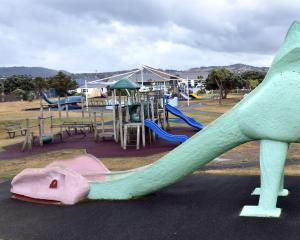

An Otago study into the effects of major storms on marine species, including rafting kelp, was published this week in the Journal of the Royal Society Interface.
The research team, led by Otago zoologist Prof Jon Waters, used DNA and geological evidence to clarify the origins of kelp rafts driven onshore by cyclonic winds in April and July, last year.
The researchers found that many kelp rafts driven ashore on July 21 had travelled at least 1200km at sea, from the remote subantarctic Macquarie Island.
Researchers were ''thrilled'' by their findings, and the rafting studies kept ''throwing up new surprises'', Prof Waters said.
The unusually strong southerly winds had driven these kelp rafts north, and across the Subtropical Front - a major ocean barrier - allowing them to reach mainland New Zealand.
Prof Waters said a big storm in 2010 had also brought to Dunedin beaches kelp and rock material from the subantarctic Auckland Island, about 600km away.
But storms over the past year had carried kelp and sizeable attached rocks about twice the earlier distance.
Scientists had long suspected that kelp rafts could drift for long distances, but these findings represented ''some of the longest natural rafting events ever documented anywhere'', Prof Waters said.
Some rocks from far away places had been turning up on Dunedin beaches, and the kelp rafting mechanism ''definitely can solve some geological riddles'', he said.
Some pieces of rafted kelp on beaches were up to 9m long.
The long-distance kelp was highly buoyant, and was likely to be pushed along by wind at quite high speeds, on the ocean surface,carrying rocks weighing 7kg or more.
Study co-author and Otago geologist Prof Dave Craw said that exotic rocks attached to the seaweed showed many of the rafts had come a long way, from ''very distant geological sources''.












